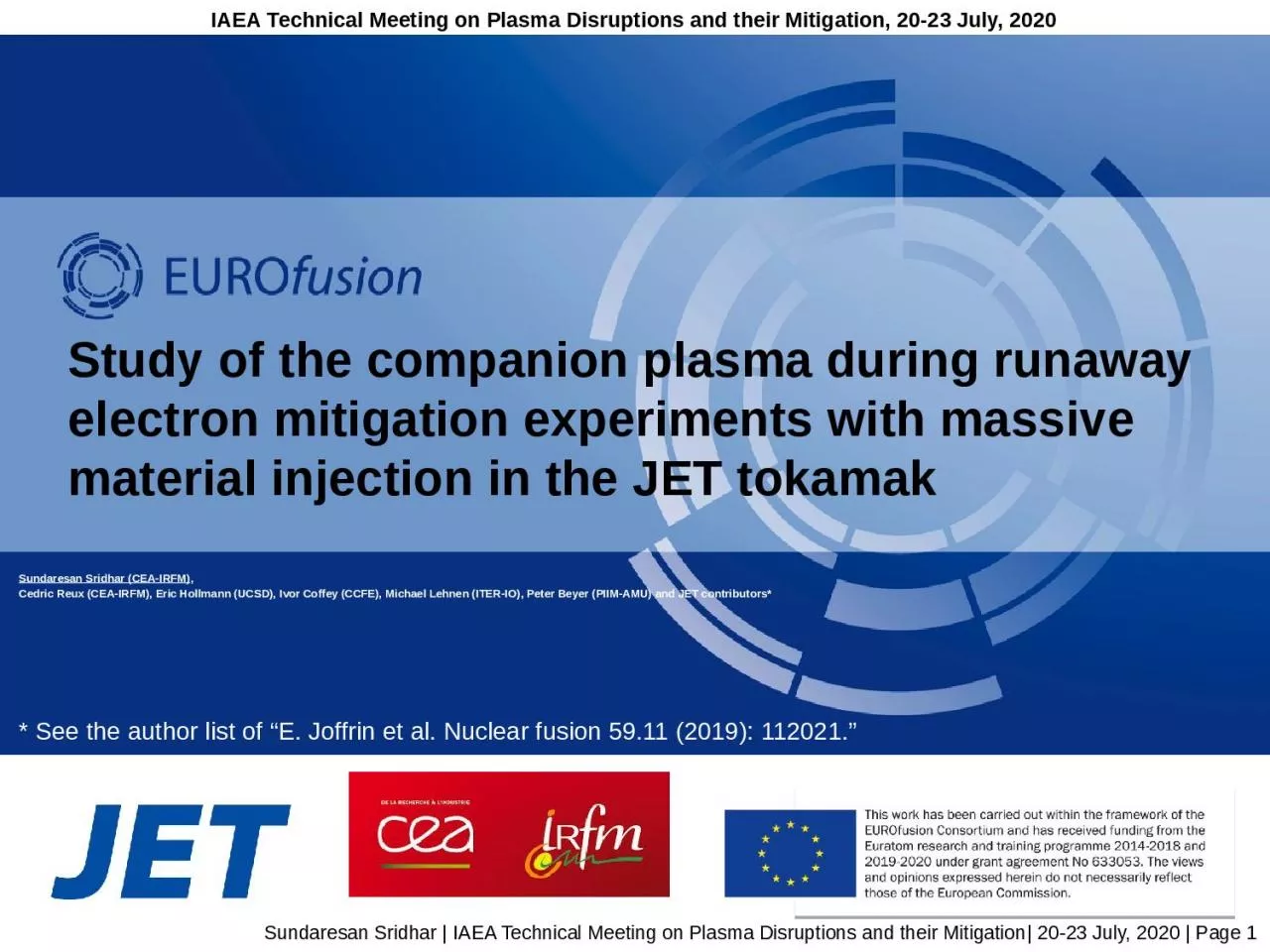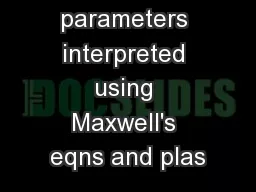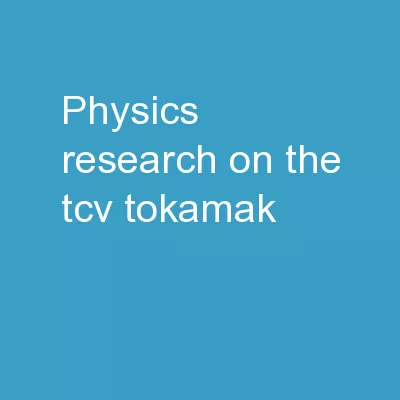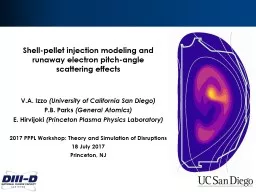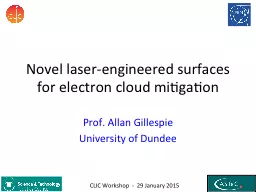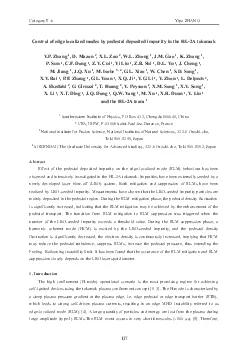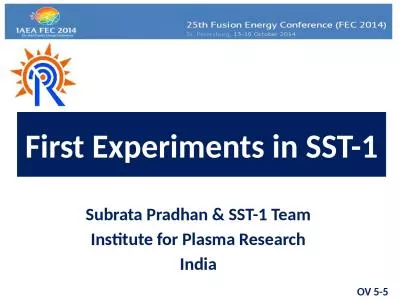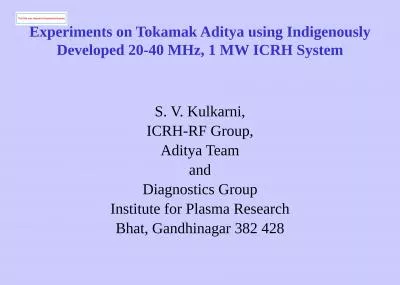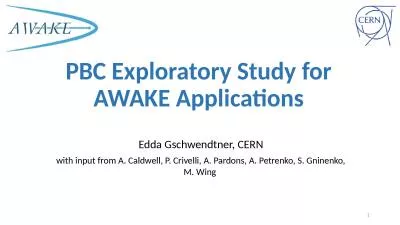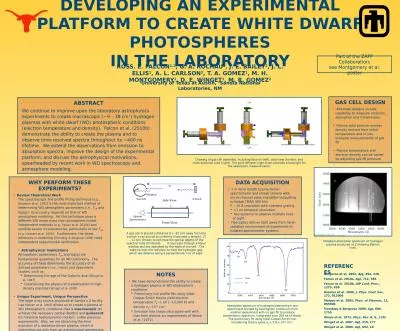PPT-Study of the companion plasma during runaway electron mitigation experiments with massive
Author : megan | Published Date : 2023-06-21
Sundaresan Sridhar CEAIRFM Cedric Reux CEAIRFM Eric Hollmann UCSD Ivor Coffey CCFE Michael Lehnen ITERIO Peter Beyer PIIMAMU and JET contributors IAEA Technical
Presentation Embed Code
Download Presentation
Download Presentation The PPT/PDF document "Study of the companion plasma during run..." is the property of its rightful owner. Permission is granted to download and print the materials on this website for personal, non-commercial use only, and to display it on your personal computer provided you do not modify the materials and that you retain all copyright notices contained in the materials. By downloading content from our website, you accept the terms of this agreement.
Study of the companion plasma during runaway electron mitigation experiments with massive: Transcript
Download Rules Of Document
"Study of the companion plasma during runaway electron mitigation experiments with massive"The content belongs to its owner. You may download and print it for personal use, without modification, and keep all copyright notices. By downloading, you agree to these terms.
Related Documents

